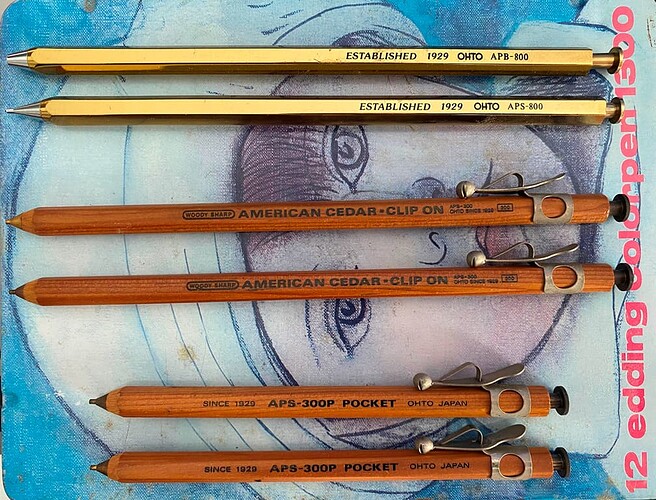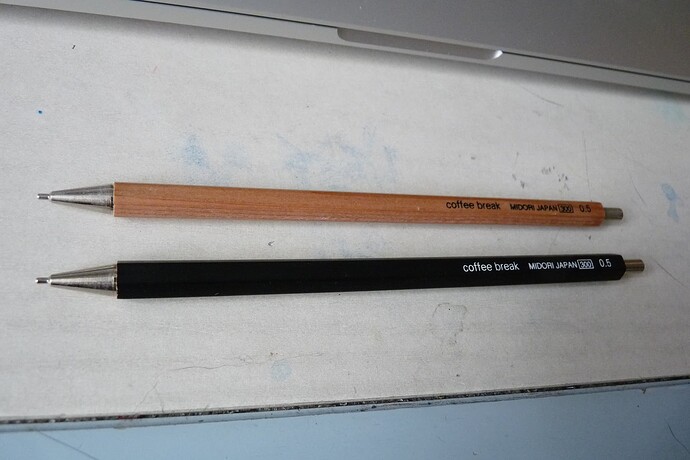These Ohto’s are very nice; I think they made a lot of versions and knockoffs over the years, and a couple of granddaughters of those made it into my collection, but they are coated with a strange, rubber-like surface, and I don’t find them particularly pleasing. Also, the button has changed, and the overall appearance does not match the beauty of @2nd_astronaut 's models.
On the other hand, allow me to present two of my favourite wooden-body mechanical pencils…
These are my Coffee Break 300 0.5, by Midori Japan, which were available in Italy via the Vittorio Martini brand — a company once specialised in high-quality drafting equipment, which rebranded itself as a high-quality writing instruments dealer. Knock-type mechanism with very minimal internals, and a weight close to null.
I bought my first Coffee Break 300 in the early Autumn of 2000, while attending my first year at University, in a fancy stationary shop in Naples which is now less of a shadow of its former self; my choice went towards a black-body model, and it served me very well for a veeery long time, around 15-18 years.
One day, however, I noticed that the smooth finish on the body was fading, a few stains had emerged on the black coating, and after a cleaning session, the pencil looked rough and actually “tired” of being used, so I arranged for its retirement, and l just put it into a pencil pot, sure I’d never use one again. After all, it was in some sense a wooden pencil, and those tend to consume themselves with age: in my mind, it made sense.
Then came a recent trip to Venice, where in the far corner of a drawer full of new and old pencils belonging to a famous art supplies store, I spotted the two items pictured in the shot above, to my utmost surprise — and I knew instantly I had to refill my supply of Coffee Break pencils, so here they are. The items were in amazing, NOS condition, and they had probably been sitting there for ages, waiting for someone eager or crazy enough to pick them after so long.
Closeup of the bodies and imprints approaching…
What I love about these pencils is the finish on the wood: it is smooth, and I mean, much smoother than the average all-metal pencil; there is a grace in the tenderness of the lacquer, and even though the barrel is hexagonal, and sometimes can be less comfortable than a round shaft on a long note-taking session, it still delivers an amazing writing experience, especially with very soft lead.
Have you ever heard of these pencils outside of Italy? I assume these are originally Japanese, and only re-sold on a secondary market by a dealer (Vittorio Martini company, in this case), but the name “Midori” does not ring a bell, and i don’t know whether it is a famous maker, or a tiny studio.


